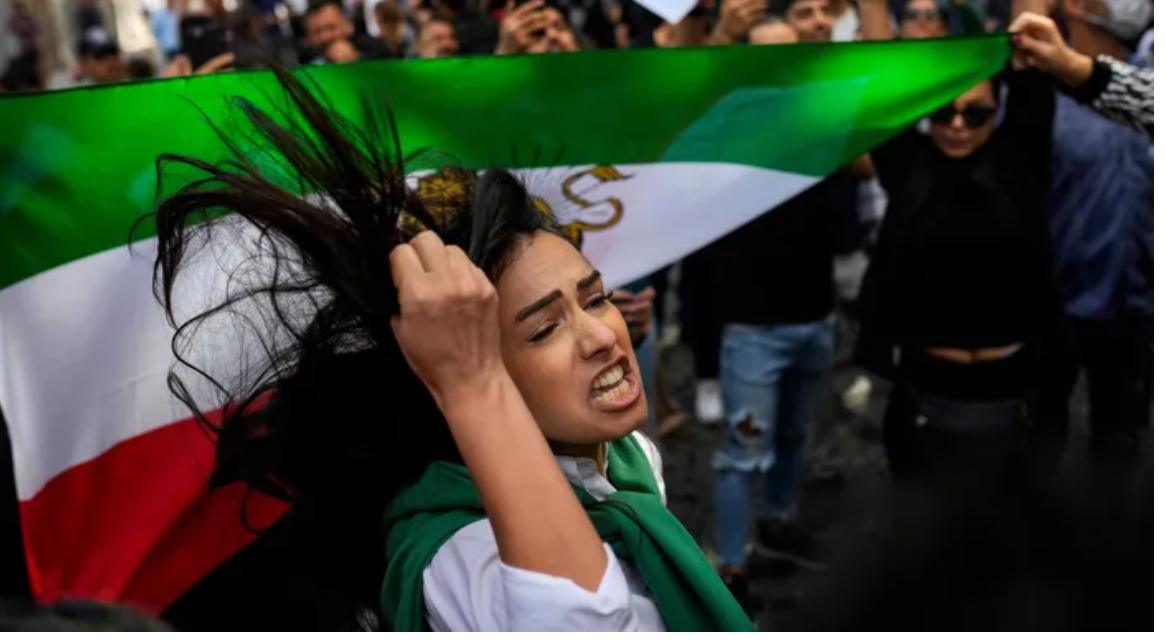PA Turkey editors looked far and wide to find intelligent commentary on how the raging protests in Iran might end. None could be located so far. As Jerusalem Post asserts, “Critics of the protests have pointed out that they are leaderless and don’t have a real program in place; and that regimes like the one in Tehran won’t likely be toppled by protests. That is where the crux of the problem lies. Iran can’t defeat the protests. But the protests don’t seem like they can defeat the regime either”. Our editorial board came up with two potential scenarios.
Iran can’t control the continued protests
“Iran can’t control the continued protests. In fact, the regime thought that the protests might end 40 days after Amini’s death; hoping that the traditional mourning period would bring them to an end on October 26. The regime was wrong, the protests are continuing”, adds the Jerusalem Post article.
It is hard to quantify the protests, but videos posted from Iran appear to show protests across the country and continued attacks on symbols of the regime. This includes recent videos of people chanting “death” the authorities, ransacking or firebombing government offices, burning the flags of Iran’s various IRGC proxies; or attacking statues and other visible evidence of the regime. For instance, images of the Supreme Leader Ayatollah Khamenei are often seen on fire. Some of the protests have also taken place in smaller towns; showing that this is an awakening across the country and the regime doesn’t have enough forces to deal with all the protests.
Nevertheless, the crackdown continues. Live fire can be heard in some recent videos and some 15,000 people have been detained. While rumors that Iran wants to execute all the detainees have been exaggerated, the regime nevertheless looks to continue to detain people and will kill some of them.
Another problem for Iran is that it may be facing pressure economically from other sectors of society, such as merchants or workers in the energy sector. It is difficult to confirm the full extent of what sectors have joined the protests or gone on strike, but it does seem the authorities are not in control of parts of the country, especially after night fall.
This kind of critique is unusual for the regime. In the past, Tehran could count on using western media to tell stories about “moderates” and it could send its then foreign minister Javad Zarif to Europe or the US where he would be greeted with smiles and hold court. But today, Zarif is gone and Iran can’t get the same attention from any Western country.
WATCH: Turkey’s Kurds Will Determine the Outcome of 2023 Elections
Iran’s ability also to mobilize lobby groups in the West, the kind that would write op-eds about the need to empower the “moderates” or create a new “deal” with Iran, has diminished. Many voices who in the past use to advocate for some kind of understanding with the regime are now supportive of the protests. The regime seems to have gone one step too far. It is also making missteps in its arming of Russia with drones, which has angered the West, and its antagonistic attitude toward the Gulf and Azerbaijan.
Iran is thus facing an unprecedented series of challenges, on the diplomatic, military and domestic front. It’s inability to juggle all of these problems is clear. The fact that it continues to lash out at Kurdish groups, using missiles to attack Koya and other areas in the Kurdistan region of Iraq, is evidence that it feels threatened. The question is whether the protests can reach the next step. They have illustrated their ability to stay in the streets.
Then, what?
Shahir Shaidsaless, writing for Middle East Eye states that an outside leader might galvanize the protesters into a coherent movement for freedom, but none exists with cloud among protesters.
Two alternative end games are possible. First the country will mutate into Venezuela, where Maduro and the opposition are tied up in an endless struggle, sapping the nation’s morale, resources and social cohesion. The second scenario involves protesters in particular ethnic minorities taking up arms, which would lead to a situation similar to Syrian civil war. Iran’s porous borders, which could enable a flood of foreign insurgents to join the battle makes this scenario dangerous, but worth considering in earnest.
Or, could the Iranian regime provoke clashes with Israel and/or Saudi Arabia to detract attention form protests and consolidate its conservative-rural base?
No matter what, it appears to PSA Board of Editors that soon protests will become a source of regional instability.
Follow our English language YouTube videos @ REAL TURKEY: https://www.youtube.com/channel/UCKpFJB4GFiNkhmpVZQ_d9Rg
And content at Twitter: @AtillaEng
Facebook: Real Turkey Channel: https://www.facebook.com/realturkeychannel/
